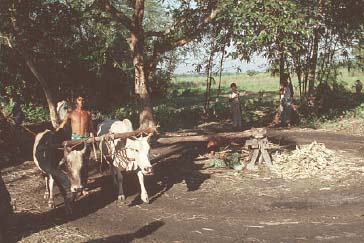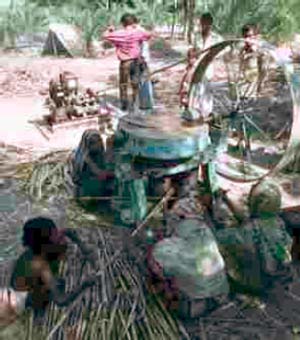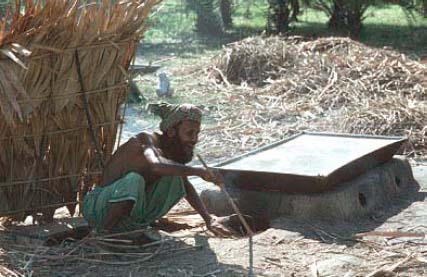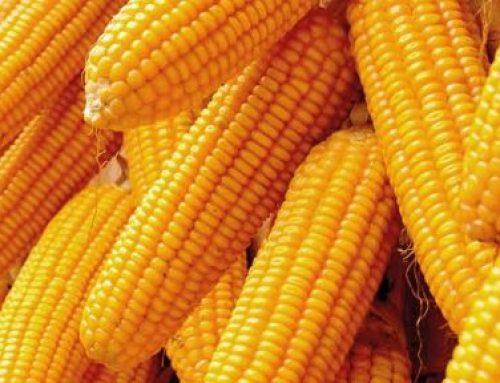The basic process
Sugar cane must be crushed to extract the juice. The crushing process must break up the hard nodes of the cane and flatten the stems. The juice is collected, filtered and sometimes treated and then boiled to drive off the excess water. The dried cane residue (bagasse) is often used as fuel for this process. The remaining liquid is allowed to set into a solid mass known as jaggery, gur, chancaca or panela. (Gur is used in the rest of this post.)
Yields
The yield of gur from sugar cane depends mostly on the quality of the cane and the efficiency of the extraction of juice. The table below gives some extreme values.
| High quality cane | Poor quality cane | |
| Juice per 100kg of cane | 50kg | 40kg |
| % sugar in juice | 22 | 17 |
| Gur per 100kg of cane | 10kg | 7kg |
High quality cane has a good juice content with high sugar levels (20%+). Poor quality cane or cane that has been harvested early may have similar juice content but the sugar levels will be reduced.
The efficiency with which juice can be extracted from the cane is limited by the technology used. The simple three roller crushers used by most artisanal producers will never extract more than 50kg of juice from each 100kg of cane.
Yields are also improved by careful control of the boiling process. Boiling should be completed as rapidly as possible and the conditions kept as clean as possible.
Crushing
Most artisanal sugar producers use a simple crusher consisting of three metal rollers. This is driven by either animal or diesel power. Figures 1 and 2 show both types in operation in Bangladesh. A crusher driven by a single ox can be expected to process around 50kg of cane per hour. A 5HP diesel set could increase this to around 300kg per hour. In these pictures the rollers are set vertically; many machines have horizontal rollers.

Figure 1: Animal powered crusher ©Neil Cooper/Practical Action
Important points to remember during crushing are:
- Cane must be crushed within 24 hours of being cut. After this time the sugar begins to ‘invert’ into different sugars that will not set solid.
- Crushing efficiency is the most important factor in good sugar yields. Every possible amount of juice needs to be squeezed from the cane.
Juice treatment
Juice should be filtered through a cloth before boiling in order to remove any solids such as dirt or particles of cane.
Large-scale sugar processors add lime to the juice in order to coagulate impurities which then settle out. (This is rarely done at the artisanal level.) The juice is then neutralised with sulphur dioxide. Small-scale producers add a variety of clarificants to the juice including wood ash. All of these have the effect of settling out impurities. Many producers also add ‘Hydros’ (sodium hydrogen sulphate) at the final stages of boiling. This releases sulphur dioxide into the juice and lightens the colour of the final product. (Note that a high sulphur content often remains in the final product.)

Figure 2: A Diesel powered cane crusher with three vertical rollers in Bangladesh. © Neil Cooper
Juice boiling
This is done in large pans over open fires or simple furnaces (see figure 3). The essential requirement is for clean pans and tools. Sediment settles to the bottom of the pan during boiling and is dredged out. Scum rises to the top and is skimmed off. (Both of these wastes can be fed to cattle.) A large pan such as that pictured in figure 3 would hold about 100kg of juice reducing to around 20kg of gur. The pans are usually made from galvanised mild steel sheets.
The end point of the boiling process is judged from experience; from the sight and sound of the boiling juice. Small samples can be removed to see if they set solid when cooled. For those with access to simple sugar measuring devices, this usually corresponds to a Brix (sugar content) of 90-95%.
After removal from the heat, the pans of juice are usually stirred rapidly to incorporate air and promote an even crystallisation. The cooling juice is then poured into pots or moulds to set.
Cleanliness
Cleanliness is vital to the whole process. Once the juice has been heated, impurities will speed the ‘inversion’ of sugar and lead to reduced yields. All boiling pans and tools need to be thoroughly cleaned between uses.

Figure 3: A simple open pan used for processing the juice extracted from the sugar cane. © Neil Cooper
Tools
The tools required are very simple Filtration before boiling is done through a fine woven cloth. Scum is removed from the boiling juice by a simple perforated scoop on a long handle. Sediment is removed by scraping a stretched cloth along the bottom of the pan. Once the pan has been removed from the heat, a simple rake is used to stir the thickened juice.





Leave A Comment